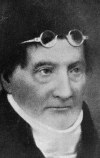
|
Sources for Gaelic harp music
Bunting’s printed collections

In 1792, Bunting was commissioned to collect and preserve the old Irish music. In the late 18th and early 19th century, the normal way of disseminating music was by publishing it arranged for domestic amateur performance on piano or other instruments, and that seemed to the organisers of the harper’s meeting to be the obvious way to preserve the national music.
There does seem to have been some tension between Bunting’s ideas of the purity and simplicity of the ancient harp music, and the commercial needs of the printers and publishers and the tastes of the cosmopolitan wealthy amateurs who were the purchasers of this kind of book. To my mind this is most clearly seen in the 1798 Ancient and Modern Irish Music (not published)..., preserved in Queen’s University Belfast, Special Collections, MS4/33(3)&(2), which have some simple harp-style basses and settings. I think this style of arranging was abandoned in favour of very Romantic and pianistic arrangements with newly composed English lyrics in the 1809 printed book.
It is also possible to trace changing fashions in music arrangement between the first published volume of 1797 and the last of 1840. The first presents music arrangements that are more antiquarian; the last presents much more up-to-date piano arrangements, and the antiquarian angle is moved into a very comprehensive and scholarly introduction.
These three printed books were very influential at the time, though they were not commercial successes. In part at least this was due to pirate editions and plagiarism; Thomas Moore used tunes from Bunting’s book for his wildly popular Irish Melodies.

Edward Bunting
A General Collection of the Ancient Irish Music
Preston & Son, London, 1797
This book was Bunting’s first published collection of some of the tunes which he had collected from the old Gaelic harpers, as well as other tunes collected from singers and perhaps also pipers. The book contains a short preface and 66 tunes "adapted for the pianoforte".
True first editions of this book are quite rare. There were many unauthorised “pirate” reprints at the time. These have
the same contents but the layout of the tunes on the page differes with each reprint (the publisher issuing the pirate
reprint would have the tunes newly engraved on new plates), so the page number of a particular tune will vary depending on which
edition you look at it in. (This book has often been listed as 1796, but Peter
Downey has shown that it was actually published in 1797.)

Edward Bunting
A General Collection of the Ancient Music of Ireland
Clementi & Compy, London, 1809
Bunting's second pubished book contained a long preface and 77 tunes. The tunes are in romantic piano arrangements, some with specially written songs in English as was the fashion of the time. The preface is a quirky historical overview of the evolution of the harp, full of antiquarian interest.

Edward Bunting
The Ancient Music of Ireland
Hodges and Smith, Dublin, 1840
This was the third and last of Bunting's publications. The introduction includes a history of the harp, biographies of important harpers, tables of various fingering and damping techniques used by each hand, tuning and nomenclature, and also commentary on some of the tunes with attempts to date them. The book contains many tunes which have been heavily arranged for pianoforte. Unlike the other two, this book was published in its own specially designed cover, in green ridged cloth with gilded harp and shamrock design, as shown in the illustration.
Modern reprints





Walton’s of Dublin published a combined facsimile edition of all three printed books (1969, 2nd edition 2002). For this edition the reproduction is not too good quality (some of the 1809 especially is hard to read) and for the 1797 volume they used an inferior pirate edition rather than the first edition.
The 1797 1st edition was reprinted as a limited edition facsimile by the Linen Hall Library, Belfast in 1996. The Linen Hall Library have also published a limited edition facsimile of an 1811 reprint of the 1809 book.
Dover have published a cheap paperback facsimile of the 1840 printed book
All three of Bunting’s printed books are available as free PDF facsimiles from archive.org using the links above. Sometimes, originals or facsimile reprints are available to purchase from the Emporium.
The British Library has a bound volume containing the 1809, and a pirate reprint of the 1797, printed editions, with copious manuscript annotations apparrently in Bunting’s own hand. Karen Loomis went to London and inspected this volume, and has written a paper on the annotations. The annotations in the 1797 volume were used by Donal O’Sullivan in his 1920s-30s edition of the tunes from the Bunting books.
Simon Chadwick